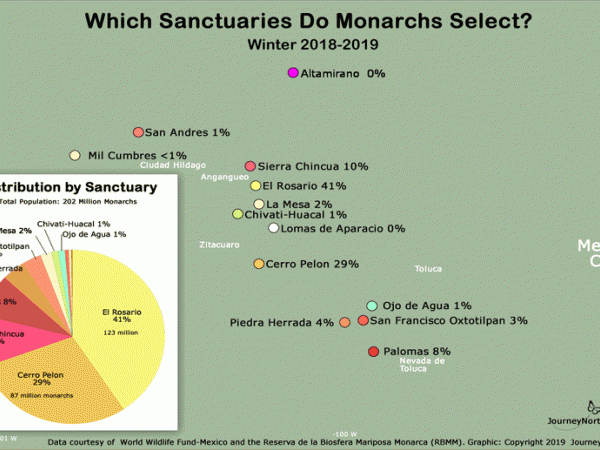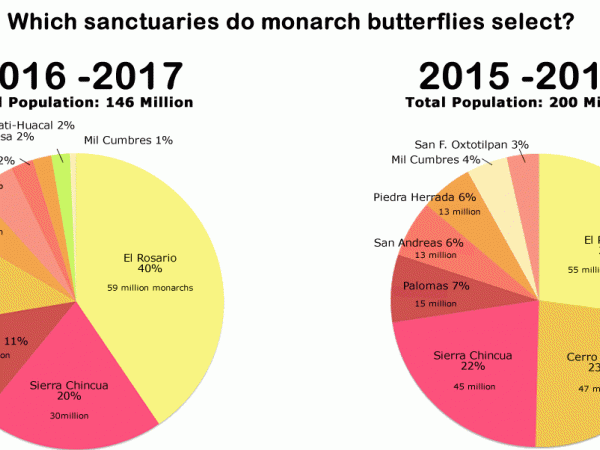Annual Population News Announced
March 8, 2018
This winter's population was down 15% from last year, and 60% below historic averages. This year's official population estimate is 124 million monarchs, compared to a long-term average of 300 million and a peak of 1 billion. The clustering butterflies covered 2.48 hectares of forest compared to a peak of 18 hectares in 1996 and an average of 6 hectares. A population of 6 hectares is the target for monarch recovery.
Why So Low?
Last fall’s late and lackluster migration provides valuable clues. Unseasonably warm temperatures — along with persistent south winds — held the migration back. The pattern began in early September and continued all fall.
Not only were temperatures warm, but south winds were associated with those temperatures. The weather map from 9/21/17 shows the persistent pattern; notice the strong south winds pushing up from Texas all the way across Minnesota and into Canada. Cold fronts, with their associated north winds, were weak, short-lived, and few.
Although people (informally) reported high reproduction all summer, high migration numbers just never materialized. The number of roost reports was low — and number of butterflies in those roosts was paltry. There were only a handful of roosts that contained more than a few hundred butterflies. Texas did not report ANY large roosts. The largest roost of the season was 4,500 butterflies - but in Ontario on October 13th! Peak migration is usually a full month earlier there.
The East had a very high summer population, and migration was strong last fall along the Atlantic. However, that region is much farther from Mexico. It's more difficult for monarchs to make it to Mexico and that region is believed not to contribute much to the overwintering population.
The north shores of the Great Lakes had one of the strongest migration seasons ever. It began in August and remained strong in mid-October, as the late roost report shows. Those butterflies did not appear in Texas in large numbers.
Based on the size and timing of fall migration, we predicted a relatively small overwintering population of 2 hectares, quite close to the official 2.48 hectares measured. These observations illustrate the power of citizen science. Thank you to everybody who contributed!




